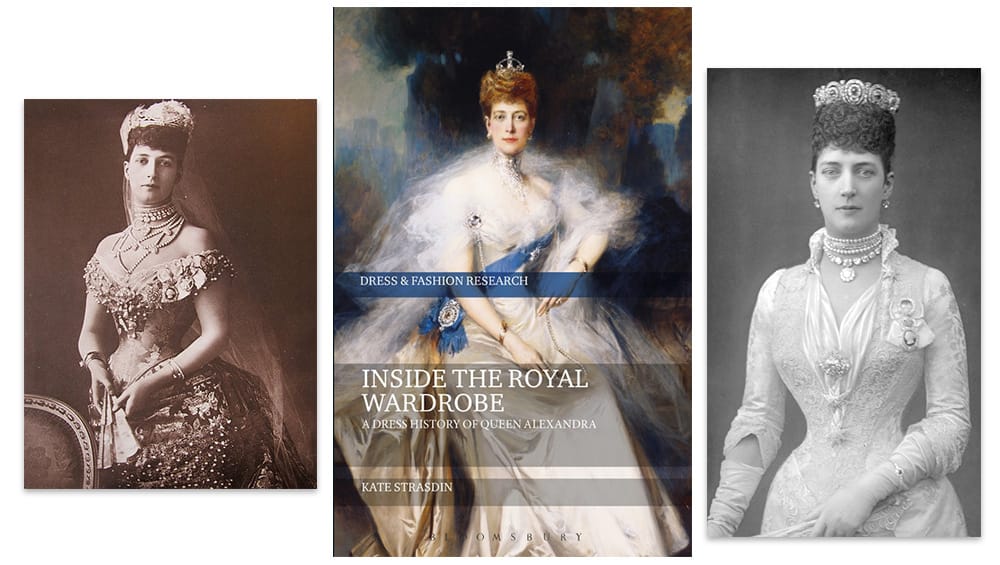Colour Conversation with Dr. Kate Strasdin, fashion historian
From the 'purple rash’ that swept the nation in the 1860s to the exquisite tailored dresses of Queen Alexandra, fashion historian and author Dr Kate Strasdin shares her passion for the colourful periods of the past.
Tell us about your career. What inspired you to become a fashion historian?
I had always loved history as a child and from a really early age I started to collect the series of cards on British Costume that used to feature in boxes of Brooke Bond tea! I had the whole set and was utterly intrigued by the shapes and silhouettes of previous generations. I started to volunteer with a collection of historic dress when I was 19 but had no real idea of how to turn it into a career so I studied history at university. The interest in dress history never left me so I took up some postgraduate studies that eventually led to teaching and writing. It really is my dream job….
What is the significance of colour in the history of fashion?
Colour has always been enormously significant in the history of dress. Sometimes it has been about power – the wearing of Tyrian purple in the Roman period, for example, was a show of status limited to only a very few. Sometimes it is about new technologies pushing forwards the possibilities of certain colours on cloth, often it is an expression of emotion so the wearing of black as a signifier of mourning sends a non-verbal message about your place in life. Colour is a very personal way to convey something of the self.
Has there been a standout period when women’s fashion was particularly colourful?
During the 1850s and 1860s, the invention of aniline dyes meant that for the first time a synthetic dye was able to reproduce a stable purple colour that did not run or fade. This meant that the brightest hues were available and for a while bright mauve dresses were incredibly fashionable. The (largely male) press was alarmed at the vibrancy of this shade, they were suspicious of its brightness and reported about the ‘purple rash’ sweeping the nation. If you look at surviving garments from this period you can see just how very bright they were.
Do you have a favourite colourful outfit from the archives?

© Victoria and Albert Museum London
There is an amazing magenta dress at the V&A that fits the aniline dye profile and is eye wateringly colourful. It completely dispels the idea that Victorian women lived in sepia tones and led black and white lives. It was a vibrant period of colour – in fact this is exactly what collections of historic dress and textiles achieve so well – they literally colour in the lives of the past by presenting us with the garments our ancestors wore. My current research project is a mid-19th century dress diary belonging to a woman in Lancashire and it is full of the most vibrant swatches of fabric that related to her daily life so the period is populated with colourful women!

Who would you say was the best-dressed woman in history?
Well I am a little bit biased here as I spent almost ten years researching the surviving garments and life in dress of Queen Alexandra, the wife of King Edward VII and Queen Victoria’s daughter in law. She was the style icon of the second half of the 19th century and was enormously popular. She did not have a public voice but used dress very successfully as a tool, both to present and disguise aspects of her public and private life. She was responsible for the popularization of tailored garments for women that has arguably become a mainstay of contemporary working wardrobes.

Who, in your opinion, wears colour well today?
I love Tilda Swinton’s style and the way that she wears colour. Her bold and often androgynous style is really refreshing, I think, in a world of red carpet clones. She tends to wear a lot of strong shapes and block colours which I find particularly appealing.

And finally, do you have a favourite colour?
Whilst I absolutely love the colour and pattern of historic garments, I am in fact a bit of a neutrals girl at heart. I realized not long ago that I had a tendency to veer towards a grey jumper when shopping so I have tried to vary things a bit but I am definitely drawn towards sharp shapes and muted tones. I am a huge fan of the movement of American sportswear designers of the 1930s and 1940s – women like Claire McCardell, Bonnie Cashin and Vera Maxwell – all of whom played with amazing designs but clean colours. Something to aspire to in my own wardrobe……



